Thomas Tuchel accepted one of the toughest challenges on the international football stage: Becoming the head coach of PSG. Expectations are higher than anywhere else at PSG where nothing but the triple counts.
At his former clubs, Tuchel impressed with tactical flexibility, changing formations from match-to-match always depending on the opposition. As a head coach of the reigning French champion, Tuchel deployed a 4-3-3 formation so far. In the following, we take a closer look at the tactical setup and how this might play to the players’ strengths.
Formation
To begin with, Tuchel deployed a 4-3-3 formation for both phases, in and out of possession. The 4-3-3 contains two centre-backs distributing the ball to the midfielders. There is one holding midfielder staying in the center, mostly in the back of the opposition striker. The two advanced central midfielders have long range off-ball movements and often rotate with full-backs and wingers. We will explain this concept in detail throughout the article.
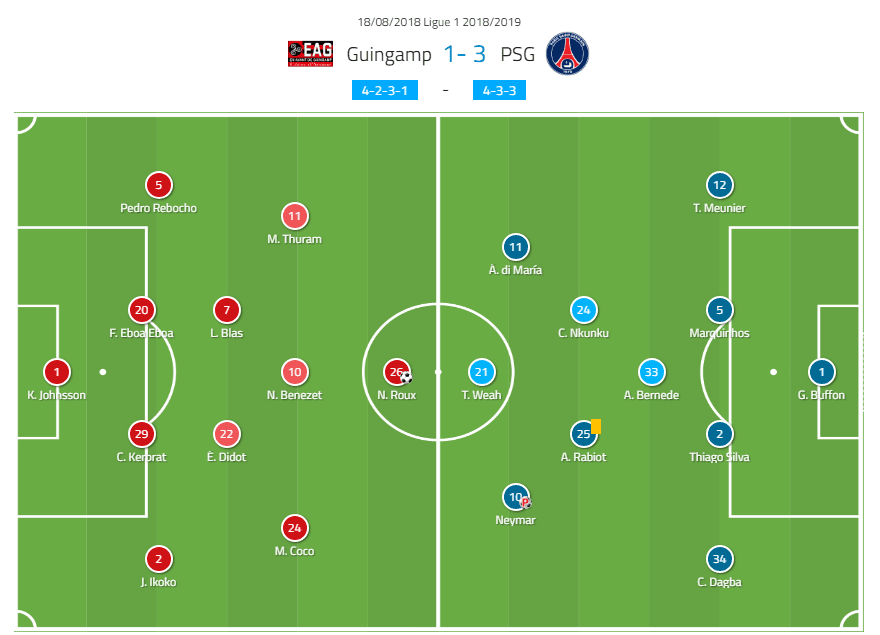
The striker either stays as deep as possible or acts like a false nine searching for space between the lines.
Half space attacking
Depicting the off-ball-movement of PSG players, it is noticeable that players rotate in order to move the opposition. The most common rotational movement happens in the half-spaces, where PSG wants to create and exploit space. While one of the central midfielders drops between centre-back and full-back, the full-back moves up along the line.
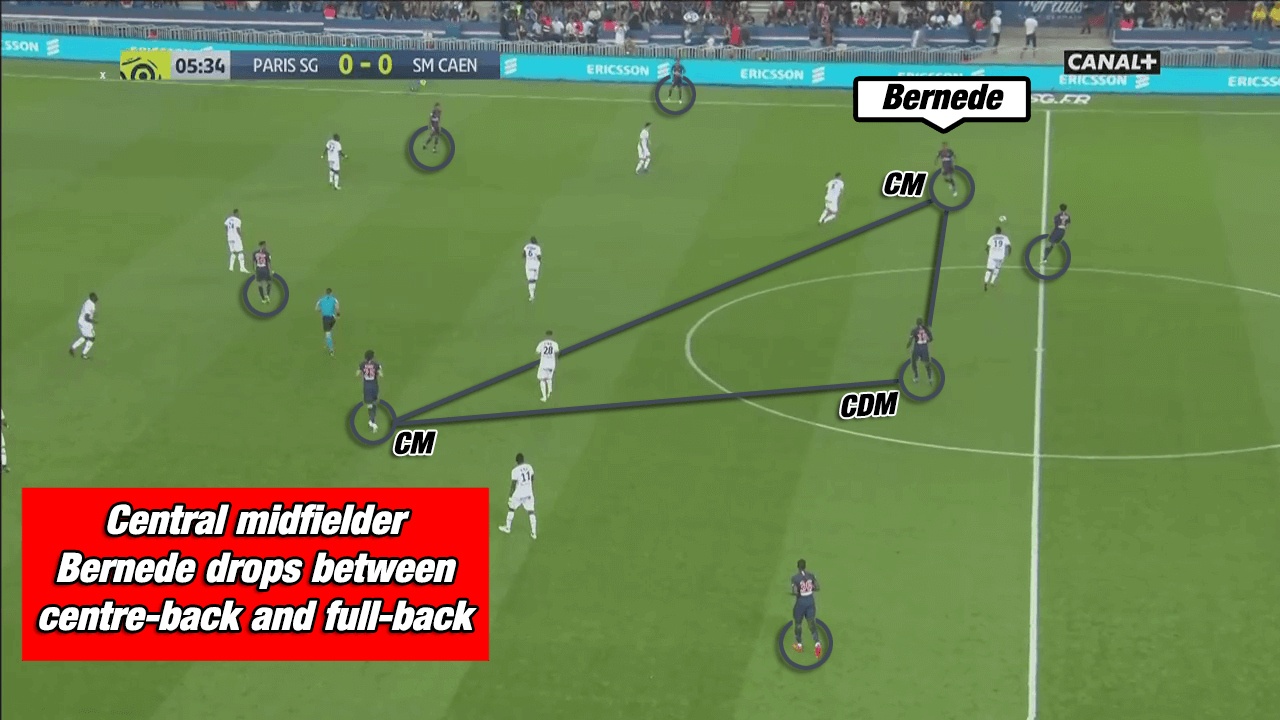
In these occasions, the winger exploits the free half-space and attempts to receive and turn. The central midfielder on the ball far side positions himself behind the midfield line of the opponent. This enables PSG to overplay midfield diagonally and switch sides at once which will be depicted in the section “Overload to isolate.”
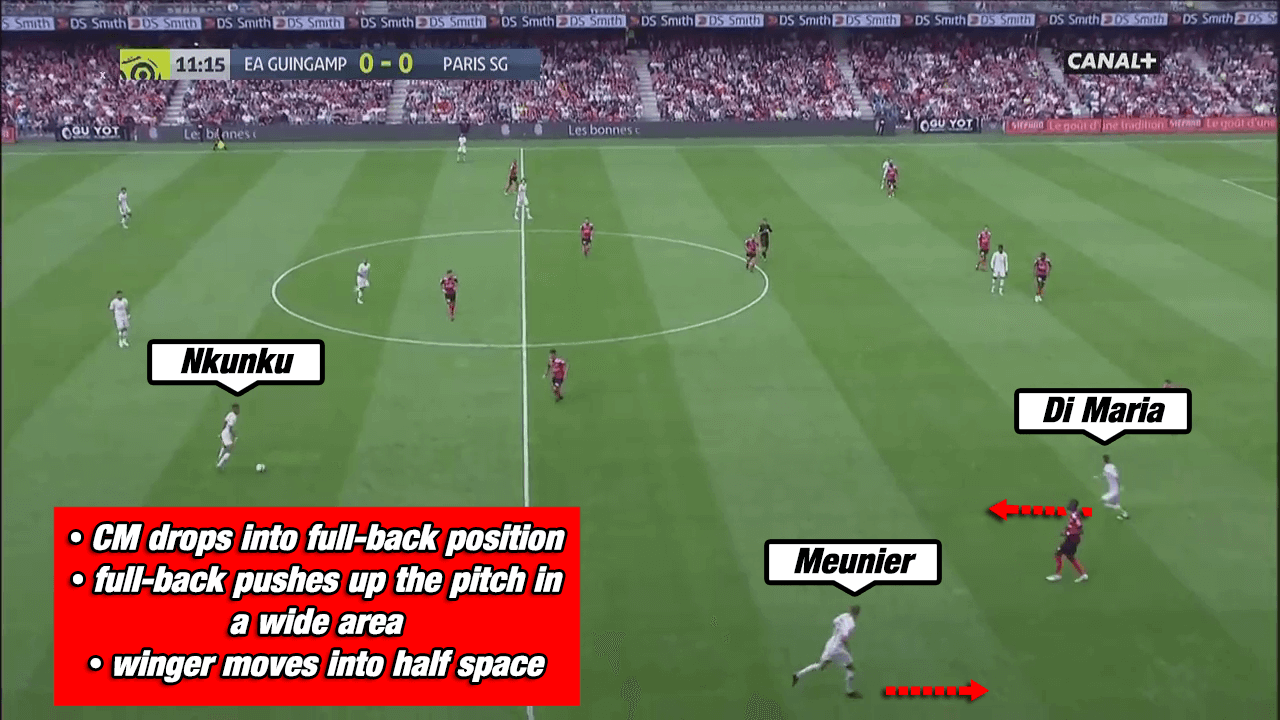
The positioning of both advanced central midfielders should create space for the attacking players. However, there is more than just this one option for the central midfielders to create space. In addition to the above mentioned movement of dropping, Rabiot seems to position himself as a second pivot being on the ball near side quite often. Thereby, he either is able to receive and turn or drags out an opposition midfielder which increases the space between the lines. In the following example, Neymar playing as a false nine, occupies the space created by Rabiot and provides a passing line to overplay midfield.
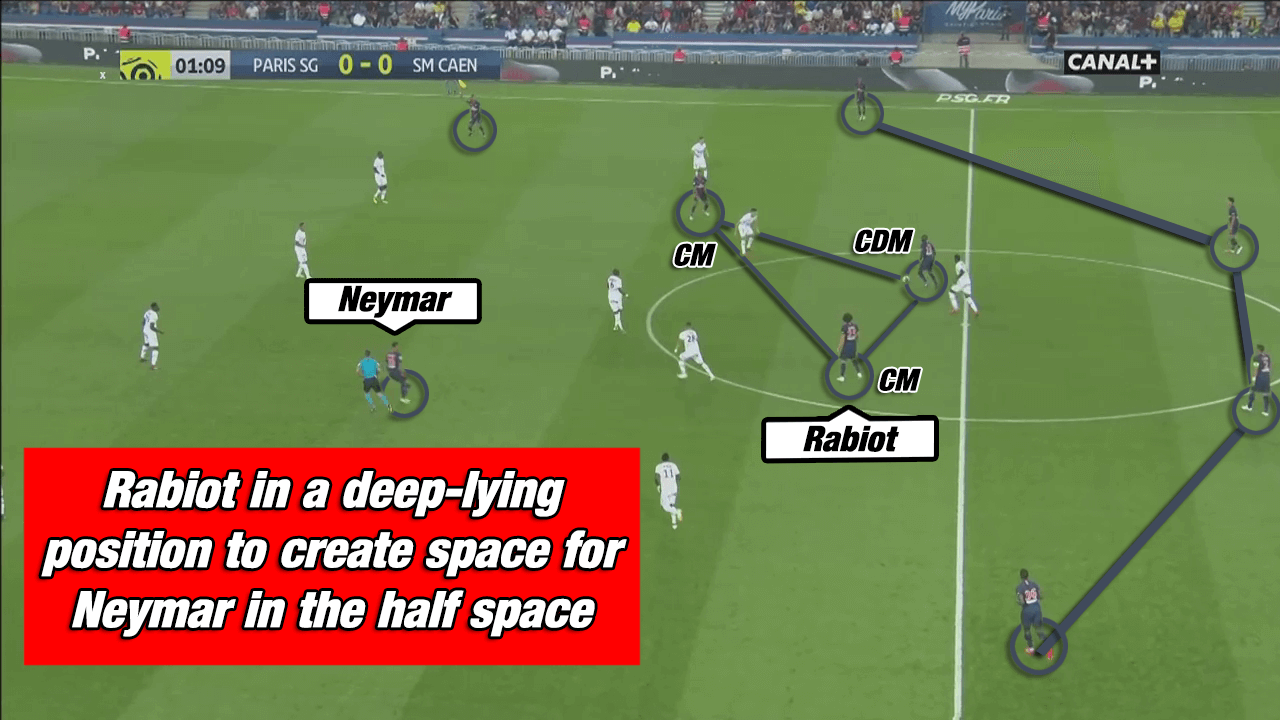
The central midfielders are responsible for breaking lines and playing passes with a higher risk. In case PSG loses possession, up to five players are positioned behind the ball. On the one hand, this is useful to prevent dangerous counter-attacks. But on the other hand, this reduces the number of players in the attacking third. In their Ligue 1 matches, the individual superiority of the attackers compensated the numerical disadvantage. However, PSG might miss penetrating power against stronger sides.
Overload to isolate
In the following of the situation shown above, Di Maria can quickly switch play from half space to half space. Due to the occupation of several opponents on the strong side, Neymar is isolated in a 1v1 situation on the weak side. The instruction of Bernede to switch play proves that Tuchel’s players already understand when to switch play.
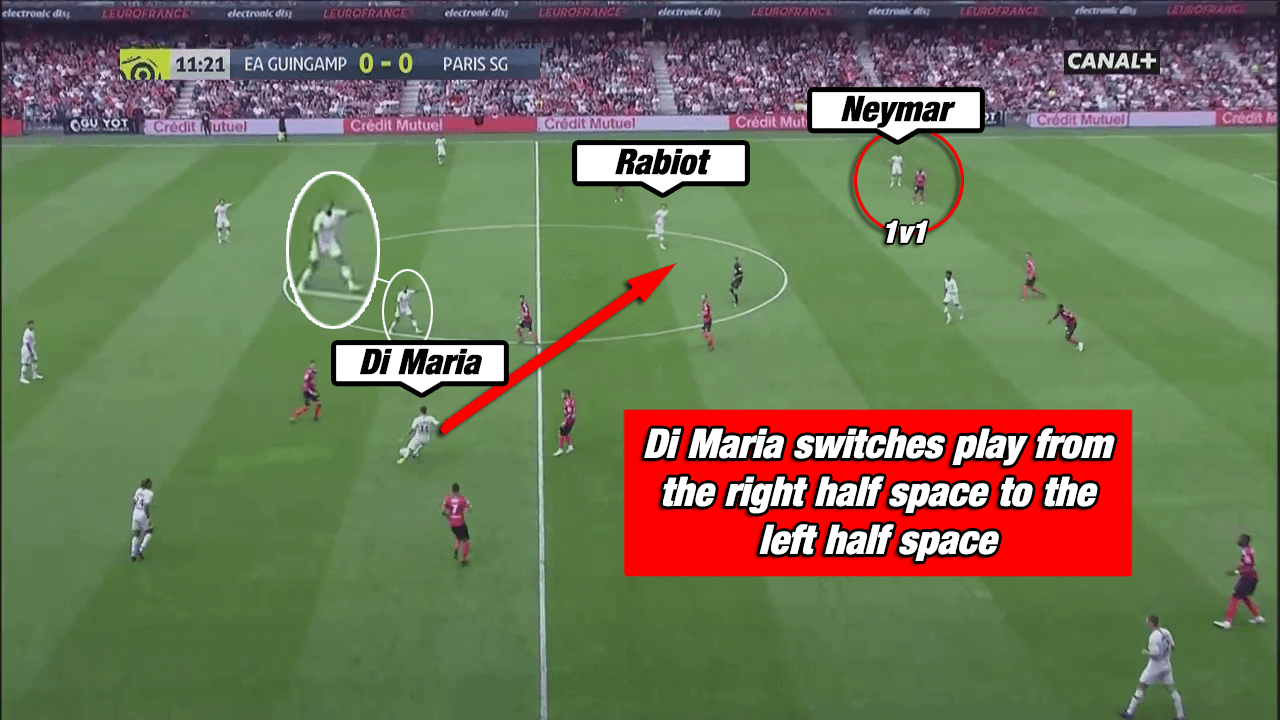
Thereby Tuchel takes advantage of the dribbling qualities of his wingers. Although any opposition knows about the abilities of Neymar and Di Maria, the opponent is forced to shift to one side. Having occupied enough players on this side, PSG will quickly switch play and expose the opposition on the weak side.
Spacing
Taking a closer look at the spacing of Tuchel’s side, it is obvious that one player provides width on each side of the pitch. Depth is provided by the striker or in case they play with a false nine, their wingers provide depth. The central midfielders are positioned in the half spaces creating diagonal passing lanes to break lines or drop and create space that can be exploited by a winger.
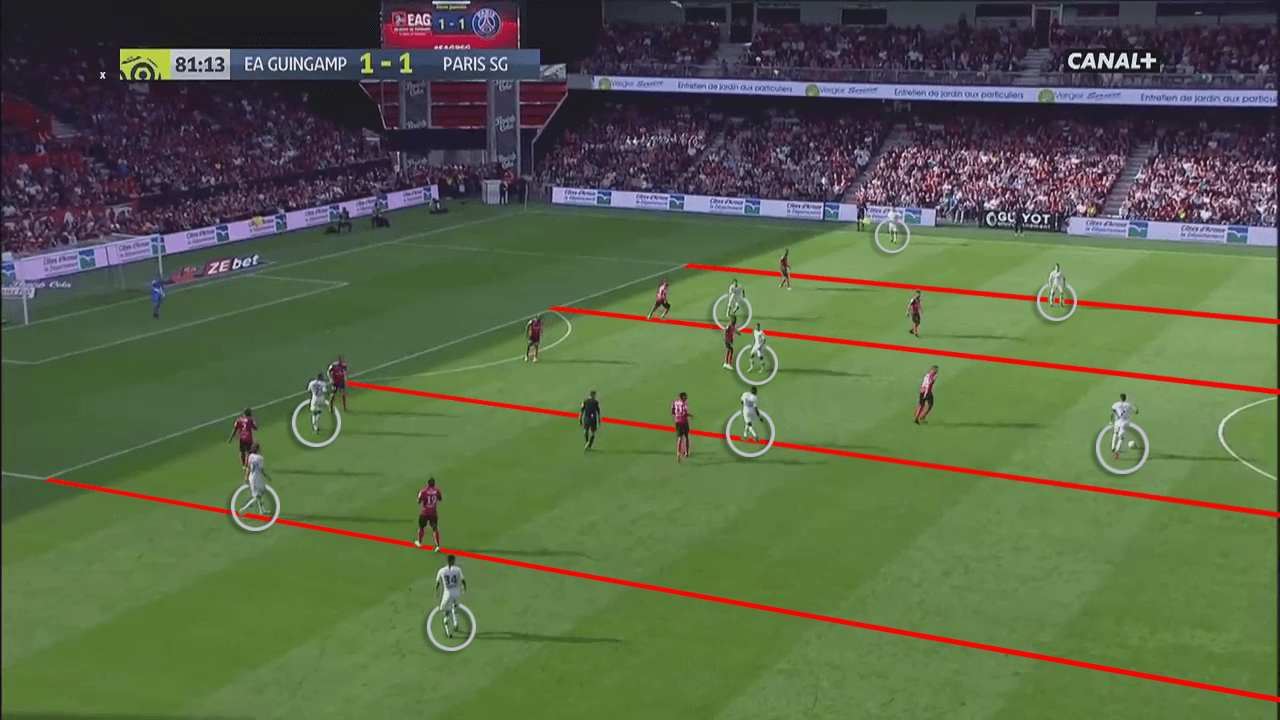
On either side, PSG has got full-backs that are capable of attacking down the wing. Meunier on the right side has already proven that in his previous World Cup appearances for Belgium. On the other side, Kurzawa might take over the role as a wing-back in possession.
This spacing resembles of Tuchel’s preferred pitch shape in training sessions: the diamond. The diamond enables a lot of diagonal passing lanes which allows players to have a better pre-orientation and an open body shape. Thomas Tuchel even interdicted long line passes at his former club Borussia Dortmund since diagonal passes are more advantageous.
Forcing the opposition inside
The PSG press has offered no surprises so far. Paris act in a 4-3-3 without the ball, aiming at pressing the opponent in the opposition half. The first pressing line contains the striker, pressing the ball in central areas and the wingers, forcing the opposition inside by cutting off the full-backs. The central midfielders act man-oriented and follow the opposition midfielders whereas, the central defensive midfielder attempts to close down passing lanes to any attackers. Moreover, the defensive midfielder keeps the distance to the back-four as close as possible to gain second balls in case the opponent plays a long ball. Furthermore, he is a cover in case the midfield gets outplayed.
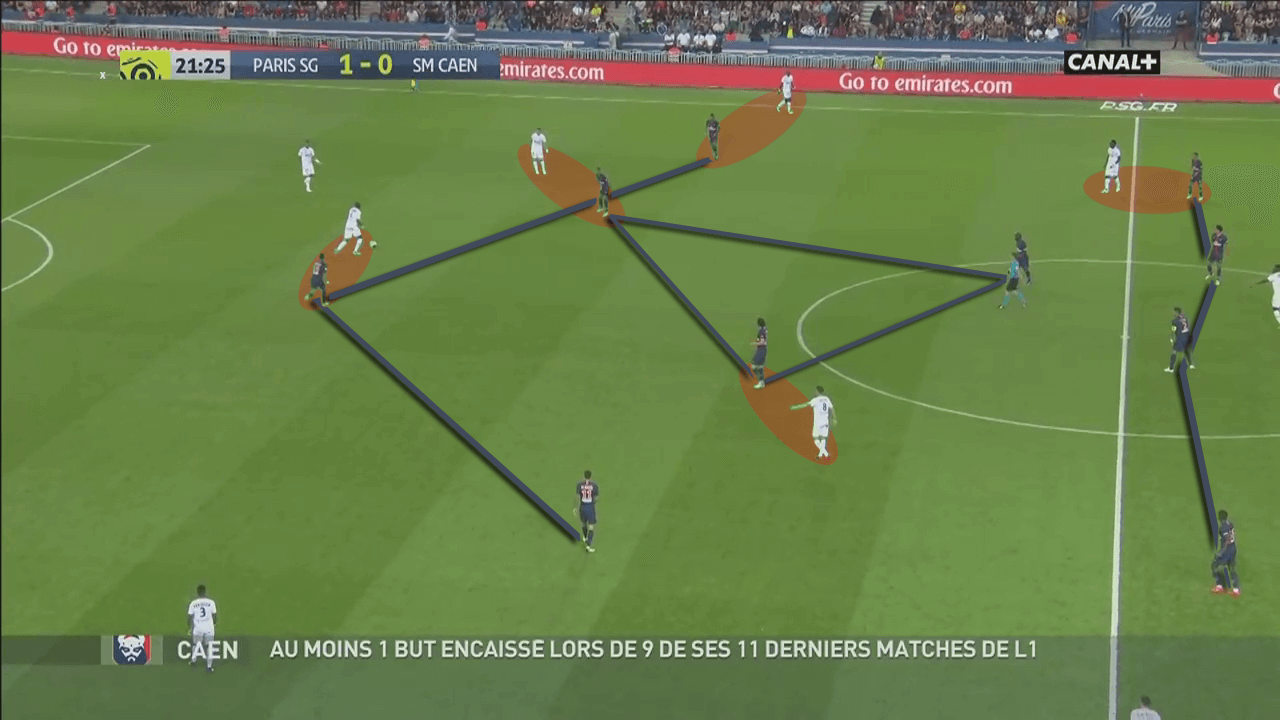
The back-four moves up the pitch to keep connection to the midfield. The sideways position of the defenders enables them to run backwards in case the opposition plays a long ball behind them.
Conclusion
To conclude, Tuchel did not reinvent the wheel but made use of several principles that he already used at his former clubs.
The positional structure and patterns looked promising and could well fit to PSG. Moreover, Tuchel stays flexible in the attack as he has the opportunity to play Neymar as false nine or as a winger. Despite of the high individual quality in the attack, it remains to be seen whether Tuchel’s approach entails enough penetrating power up front.
Before hyping the side, one should await matches against more challenging opponents and their performance in the Champions League.
Read more tactical analysis on Ligue 1 teams like Olympique Lyon.

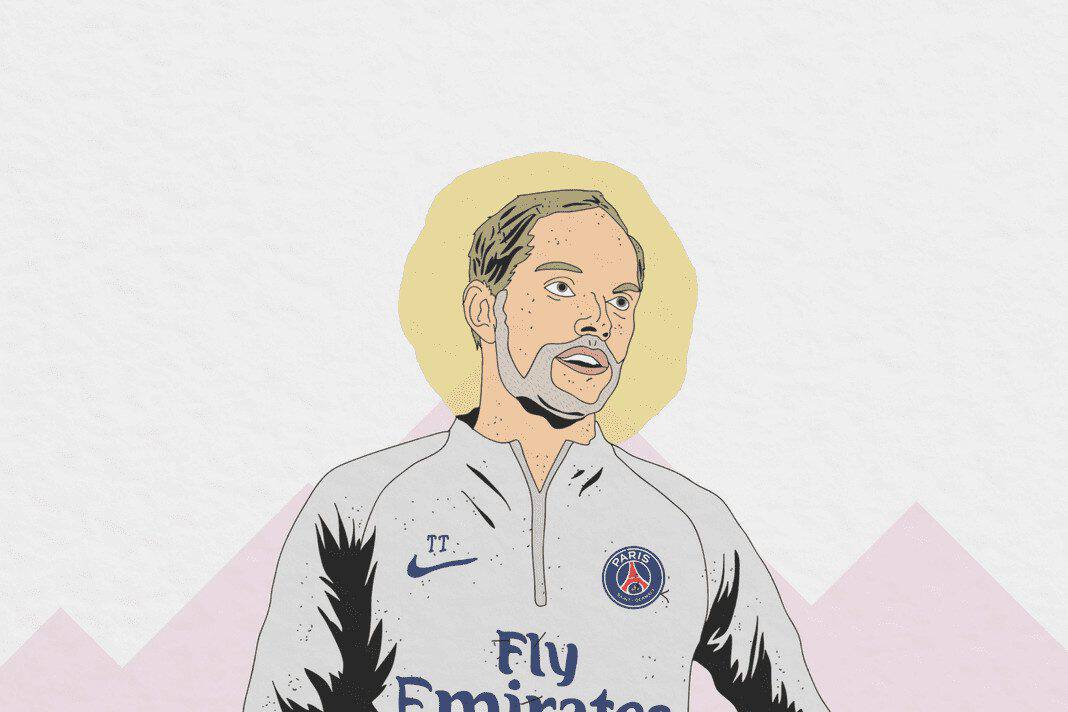


Comments